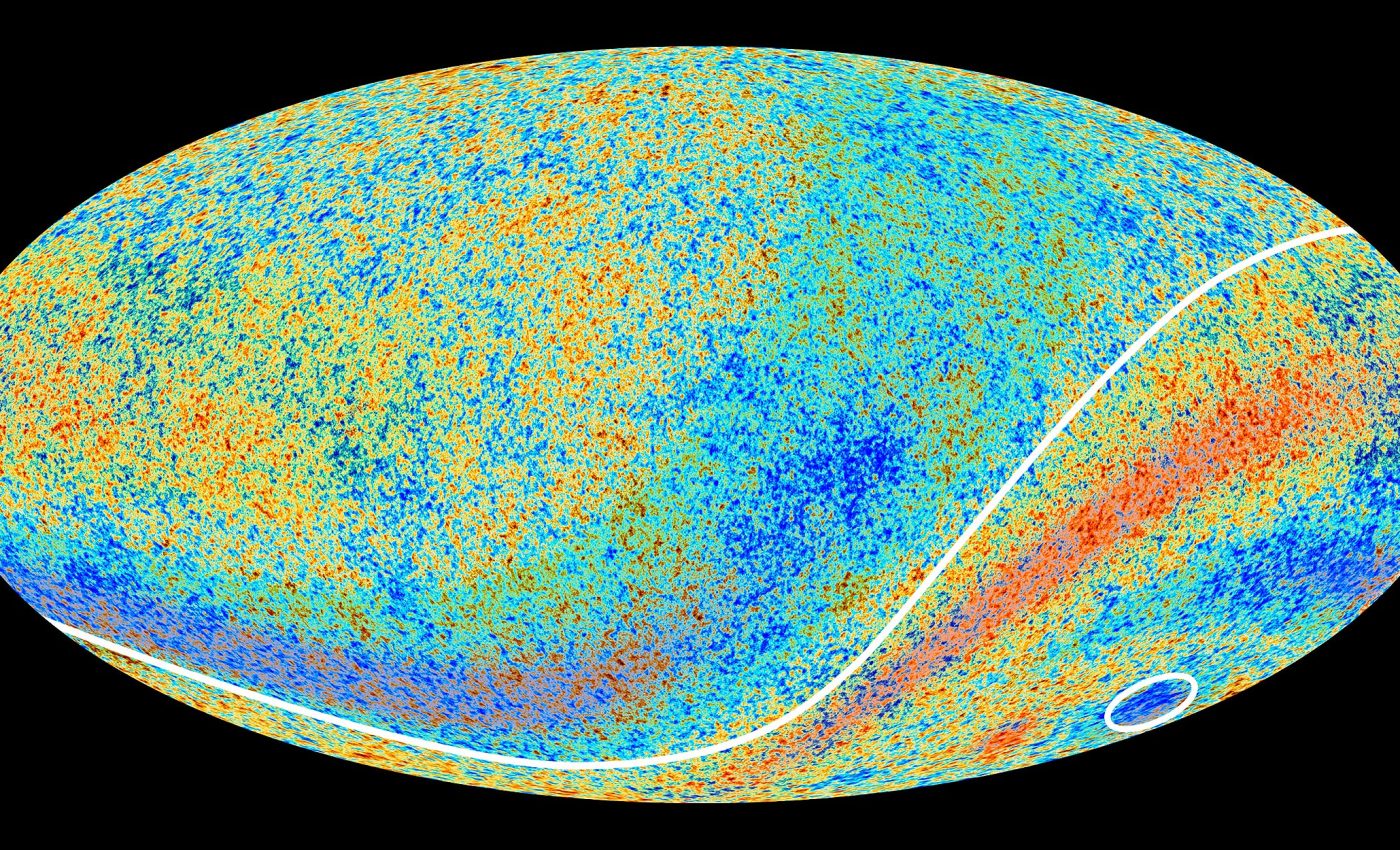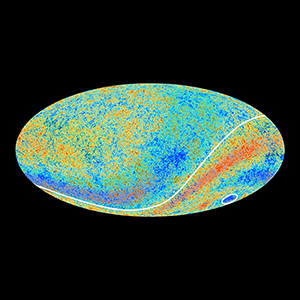
Astronomers found a weird streak running across the universe that a new study still can't explain
The universe is expected to look roughly the same in every direction, but a stubborn and consistent streak pattern identified by astronomers isn’t playing by those rules.
A new look at radio maps of the sky shows a pronounced tilt – called a dipole – where one side has more or hotter sources than the other. It’s stronger than standard models predict, raising fresh questions about what we thought we knew.
Cosmic microwave background
Lukas Böhme of Bielefeld University (UB) led the new analysis. The team focused on the cosmic microwave background (CMB), the faint leftover radiation from the Big Bang that still fills space at about 2.7 kelvin, and on radio catalogs of faraway galaxies.
In the CMB, part of that difference is expected from our motion tied to the Doppler effect, the way waves shift when the source or observer moves, and special relativity: Einstein’s theory describing how space and time behave at high speeds.
These effects slightly warm the direction we’re moving toward and cool the opposite.
“They are consistent with the Gaussian predictions of the ΛCDM cosmological model, the standard theory describing how dark matter and dark energy shape cosmic evolution, yet also confirm the presence of several so-called anomalies on large angular scales,” wrote the team of scientists that made up the Planck Collaboration.
Dipole results from three radio catalogs
Counting radio sources across the whole sky offers an independent check.
A radio continuum survey, a kind of sky map showing steady radio emissions rather than bursts, catalogs millions of galaxies to test whether one side of the sky looks brighter than the other.
Real catalogs are messy because many radio galaxies split into several visible parts, like lobes and cores, in essence causing overdispersion, and extra variation beyond what simple statistics predict.
So a basic Poisson model, which assumes random independent events, no longer fits well.
“We account for this effect via a new Bayesian estimator, a method that updates predictions as new data arrive, based on the negative binomial distribution, a formula used when data scatter more than expected,” wrote Böhme in the paper.
This approach captures the true uncertainty in a more realistic fashion.
The team combined three major radio catalogs: NVSS, a full-sky survey at 1.4 gigahertz; RACS, a map from Australia’s Square Kilometer Array Pathfinder telescope; and LoTSS-DR2, a European radio survey made with the LOFAR array.
Their results show a source-count dipole 3.67 times stronger than predicted by standard motion models, in fact, a 5.4 sigma difference, meaning the odds of it happening by chance are incredibly small.
Focusing on extragalactic structure
Earlier work assumed simple Poisson statistics for counting sources, which breaks down when one galaxy contributes multiple signals.
By modeling overdispersion, the estimator reduces that bias and produces more accurate error ranges.
The analysis also emphasized stable calibration, careful adjustment of instruments for accuracy, and clean masks – sky regions excluded to avoid interference from the Milky Way or instrumental drift.
These steps keep the focus on the extragalactic, or beyond-the-Milky-Way, structure.
Quasar signals report dipole’s strength
Other wavelengths tell a similar story.
An all-sky sample of quasars, intensely bright galaxies powered by supermassive black holes, from NASA’s WISE infrared survey, reported a dipole direction matching the CMB at an unexpectedly large strength.
More recent work using the Quaia catalog, a database of quasars for mapping cosmic structure, found results more in line with expectations.
Together, these comparisons highlight how sensitive the outcome is to sample selection and calibration. The radio and infrared maps, for now, still disagree.
What’s creating the dipole?
Residual survey errors could be part of it. Tiny calibration drifts, uneven sensitivity across the sky, or incomplete masking might leave behind a false large-scale gradient.
Another explanation is local structure: galaxies clustered more on one side than the other. This clustering, or uneven cosmic grouping, could amplify the measured dipole if the sample includes more nearby galaxies than assumed.
Some scientists have even asked whether part of the CMB dipole might be intrinsic, meaning built into the universe itself, rather than purely kinematic, ultimately caused by our motion through space.
However, most evidence still points to a motion-driven dipole.

Cleaner sky maps are key
If the radio source-count dipole truly exceeds predictions, then either our cosmic neighborhood is stranger than we think, or the universe itself isn’t as uniform as our best theories claim.
Both possibilities would shake the foundation of isotropy, the idea that the cosmos looks the same in all directions. If the discrepancy fades with improved data, the exercise still pushes cosmology forward.
Better estimators and cleaner sky maps refine the tools that will guide the next generation of surveys.
CMB, dipoles, and future study
Upcoming observations from LOFAR, ASKAP, MeerKAT, and eventually the SKA, the giant international radio telescope now being built, will make sharper, deeper maps of the sky.
More data reduces shot noise, random statistical variation, and helps separate local clustering from cosmic motion.
Cross-correlation, comparing patterns across different datasets, will further test whether the signal is real or a byproduct of measurement quirks.
As instruments improve, the universe will either reveal that the odd streak is an illusion or that our cosmic symmetry was never quite what it seemed.
The study is published in Physical Review Letters.
—–
Like what you read? Subscribe to our newsletter for engaging articles, exclusive content, and the latest updates.
Check us out on EarthSnap, a free app brought to you by Eric Ralls and Earth.com.
—–













